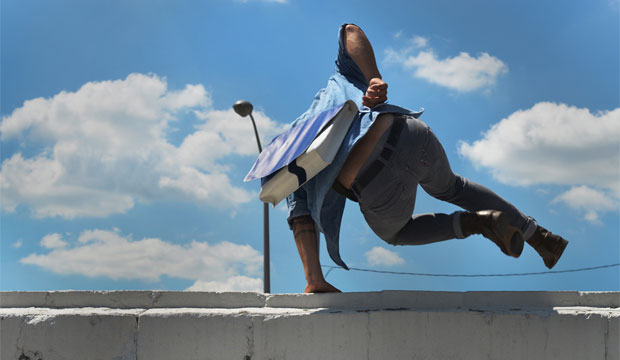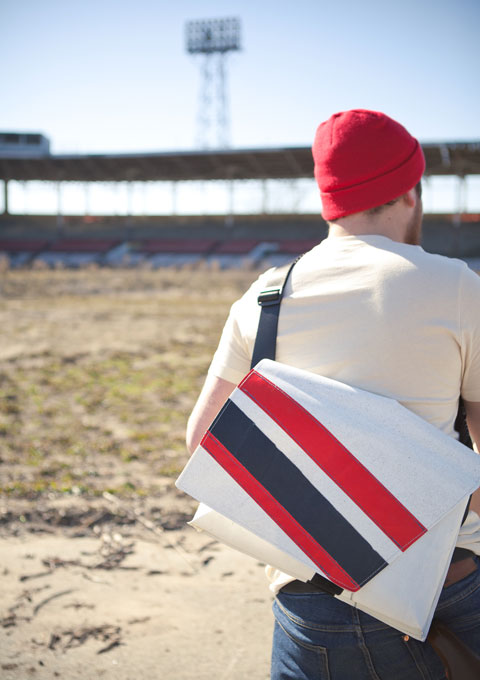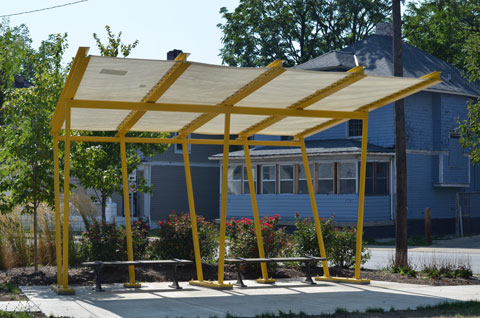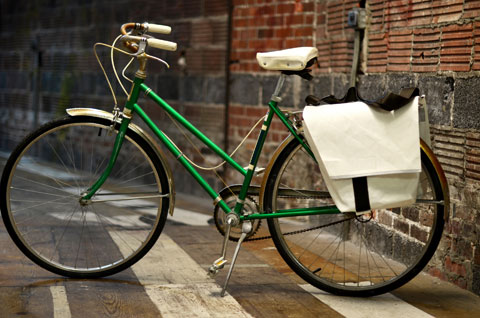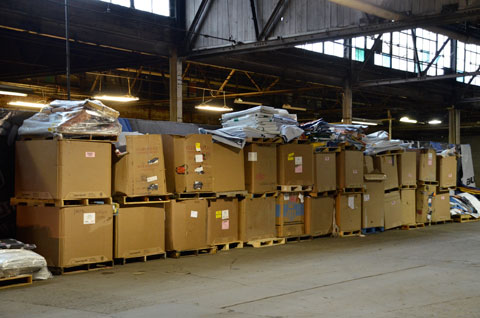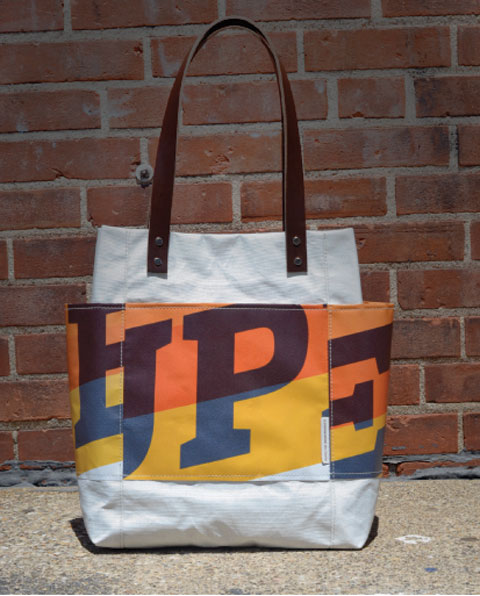Based in Indianapolis, People for Urban Progress (PUP, for short) is a non-profit organization that successfully uses design and nostalgic ephemera to promote and advance public transit, environmental awareness, and urban design. It’s a perfect example of how great solutions can be found by simply looking at the issues faced by a city or community, and the previously overlooked resources available to address those problems.
I recently met Michael Bricker, PUP’s chief innovator and co-founder, in New York and was able to talk to him a bit about the drive and passion behind the work that his team does and the secrets behind the organization’s success.
GL: Tell me about the mission of PUP and how the project got its start
MB: We started People for Urban Progress in 2008 with a question: Upon demolition, what was going to happen to the roof fabric of the RCA/Hoosier Dome? The more we asked, the more we realized that the city didn’t have a plan for this resource. As such, we reached out several non-profits, city offices, and foundations to help us salvage this incredible resource. Coming up empty-handed, we decided to become the organization we were looking for — one that set out to solve problems distinct to Indianapolis, considering transit, environment, and design in unison. This became our mission.
We spearheaded the salvage of the nearly 13-acre roof of the RCA Dome, with the idea that the material could be repurposed throughout the city in the form of shade structures and pavilions. Initially, we could not afford to make these structures, so we bought a sewing machine and started making small things — wallets, clutches, and messenger bags. From here, not only has our product line expanded over the past 3.5 years, but we’re also funding the development of several community improvement projects and programs, ranging from shade structures and pavilions to new bus stop seating and municipal carsharing.
Our idea is simple: make small things to fund big things. Along the way, we’re rethinking the entire structure of traditional non-profits and creating jobs for local designers, makers, and fabricators. We believe in portfolio careers, or people who have multiple creative jobs — the interior designer/handbag maker, the architecture/filmmaker, the administrative assistant/designer. This is the future of creative work. It’s open source, collaborative, and fundamentally about demystifying the perception of design and designers.
Through PUP, these people are able to develop innovative and quality projects within their communities, adding value to the public perception of design. We are expanding the definition of this word to include social innovation, problem-solving, and community engagement as well.
GL: What were some of the challenges you faced early on and how have you managed to overcome them?
MB: Starting in 2008 at the beginning of the economic downturn, we struggled to find financial support. This ended up being a good thing, as we were challenged to completely rethink our financial sustainability. So from the very beginning, we operated as a social enterprise. Indianapolis was also a much different city four years ago, with organizations and individuals less likely to take risks and to invest in innovation and urban development. This is changing, and we’re fortunate to be part of a growing network of thinkers and makers that are changing the city by doing.
GL: What, if anything, makes Indianapolis an ideal place for this project?
MB: Indianapolis has struggled to take itself seriously as a major metropolitan area. Our transit system is underfunded and design and placemaking are not priorities with local developers. This has changed somewhat in the past few years, with an explosion of biking, local food, pop-up shops, and most notably, the completion of the Cultural Trail. There is still tons to do, much of which involves educating the public and city officials. We do this through our projects, using the city as an urban laboratory to prove how small changes can make a big difference.
GL: Any plans of expanding to other cities?
MB: We are definitely interested in expanding to other cities, particularly across the Midwest. We envision PUP chapters made of people tackling the problems and issues unique to their city. A priority in this, however, is to make sure these changes are made through doing and making.
GL: What kind of reactions have you received from the community?
MB: The community loves our products, and we’re finally in a position where people are seeing that we’re more than just messenger bags. People also love learning about our process and seeing the number of hands involved in making one bag or one shade structure. Additionally, people are starting to come to us with tons of new ideas. We ultimately aim to be an incubator for these ideas, helping to empower the community to address their own needs. Sometimes this means we adopt a project, other times we’re simply a conduit for connecting the right people.

Made from the roof fabric of the former RCA Dome, the domeflake ornament ($35 for a set of 5) is the perfect holiday gift for your favorite sports fan.
GL: Many of PUP’s projects seem to be somehow related to sports, is this a coincidence?
MB: I suppose our relationship to sports is somewhat coincidental, though with Indianapolis being such a major sports hub, it seems fitting. Stadiums are mega-structures, and when they’re replaced, they generate tons of waste. They are however, loaded with cultural nostalgia and history, which make them (or the pieces of them) an ideal mechanism for engaging a wide range of the public.
GL: After the Super Bowl in Indy, you collaborated with the NFL to salvage discarded decor material and make products out of it, is that something you will continue to do, as the Big Game moves to other cities?
MB: We hope to continue as an advisor, keeping the NFL informed on how we’ve repurposed the materials and helping other cities do the same. Rumor has it that Indianapolis will be submitting to host again in the near future, and we’ll be even more prepared the second time around.
GL: Let’s hope so. I think one of the reasons your products have become so popular is that they are just really well-designed, and I understand you only work with local artists, designers and manufacturers. What role do you think design can, and will, play in making our world a better place?
MB: Design is fundamental to how we work. The popularity of our products is directly related to the design… being well designed and handmade makes them more than just souvenirs. The design grabs people’s attention, while the history and meaning and cause keep their attention and immediately engage them in our mission and vision. In developing a great product, we’re arming our customers with a story about their city, and with the knowledge that their purchase supports community improvement projects. We believe this approach can be scaled up where products, fashion, and design become a mechanism for urban innovation and development.

PUP’s 317 shirts are designed to celebrate the city of Indianapolis, and are the first part of a campaign to increase urban pride, awareness, and connectivity.
Find out more and connect with People for Urban Progress:
Facebook / Twitter / Etsy / Vimeo

